- Clone
- 8WG16 (See other available formats)
- Regulatory Status
- RUO
- Other Names
- RNA polymerase II sub-unit 1, RPB1, CTD repeat YSPTSPS, C- terminal domain repeat YSPTSPS, DNA-directed RNA polymerase II subunit A, RNA-directed RNA polymerase II subunit RPB1, POLR2A, POLR2
- Isotype
- Mouse IgG2a
- Ave. Rating
- Submit a Review
- Product Citations
- publications

-

Total lysates (15 µg protein) from HeLa cells were resolved by electrophoresis (4-12% Bis-Tris gel), transferred to nitrocellulose, and probed with 1:500 diluted (1 µg/mL) Purified anti-RNA Polymerase II RBP1 Antibody, clone 8WG16 (upper) or 1:3000 diluted Purified anti-β-actin Antibody, clone Poly6221 (lower). Proteins were visualized by chemiluminescence detection using a 1:3000 diluted goat anti-mouse-IgG secondary antibody conjugated to HRP for the anti-RNA Polymerase II RBP1 Antibody, and a donkey anti-rabbit IgG Antibody conjugated to HRP for anti-β-actin Antibody. -
Total cell lysates (15 µg protein) from HeLa, THP-1, and Raw264.7 were resolved by 4-12% Bis-tris gel electrophoresis, transferred to nitrocellulose, and probed with anti-RNA Polymerase II RPB1 antibody (clone 8WG16). Proteins were visualized using a goeat anti-mouse IgG secondary antibody conjugated to HRP and chemiluminescence detection. Direct-Blot™ HRP anti-β-actin antibody was used as a loading control. -

HeLa cells were fixed with 2% paraformaldehyde (PFA) for ten minutes, permeabilized with 0.5% Triton X-100 for five minutes, and blocked with 5% FBS for 30 minutes. Then the cells were intracellularly stained with 2 µg/ml anti-RNA Polymerase II RPB1 (clone 8WG16 ) in blocking buffer overnight at 4°C and followed by DyLight™ 594 (red) conjugated goat anti-mouse IgG for one hour at room temperature. Actin filaments were labeled with Alexa Fluor® 488 Phalloidin (green). Nuclei were counterstained with DAPI (blue). The image was captured with a 60X objective. -

Chromatin Immunoprecipitations (ChIP) were performed with cross-linked chromatin samples from 4 X 106 of HeLa cells with either A)1:300 dilution of Go-ChIP-Grade™ Purified anti-RNA Polymerase II RPB1 Antibody (clone 8WG16, Cat. No. 664911) or B) equal amount of Purified Mouse IgG2a, κ Isotype Control Antibody (Clone MOPC-173, Cat. No. 400201) by using Go-ChIP-Grade™ Protein G Enzymatic Kit (Cat. No. 699904). The enriched DNA was purified and quantified by real-time qPCR using primers targeting human GAPDH gene region and α-Satellite repeats. The amount of immunoprecipitated DNA in each sample is represented as signal relative to total amount of input chromatin.
| Cat # | Size | Price | Quantity Check Availability | Save | ||
|---|---|---|---|---|---|---|
| 664906 | 100 µg | 323 CHF | ||||
RPB1 is the catalytic and largest component of RNA polymerase II, which synthesizes mRNA precursors and many functional non-coding RNAs. It forms the polymerase active center together with RPB2, the second largest subunit. Polymerase II (Pol II) is the central component of the basal RNA polymerase II transcription machinery. It is composed of mobile elements that move relatively to each other. RPB1 is part of the core element with the central large cleft, the clamp element that moves to open and close the cleft, and the jaws that are thought to grab the incoming DNA template. At the start of transcription, a single DNA template strand of the promoter is positioned within the central active site cleft of Pol II. Then, a bridging helix emanates from RPB1 and crosses the cleft near the catalytic site, which acts as a ratchet that moves the RNA-DNA hybrid through the active site by switching from straight to bent conformations during each neuocleotide addition. This promotes translocation of Pol II. Pol II moves on the template during transcription elongation. Elongation is influenced by the phosphorylation status of the C-terminal domain (CTD) of Pol II's largest subunit (RPB1), which serves as a platform for assembling factors that regulate transcription initiation, elongation, termination, and mRNA processing. It can act as a RNA-dependent RNA polymerase when associated with small delta antigen of Hepatitis delta virus, being able to conform as both a replicate and transcriptase for the viral RNA circular genome.
Product DetailsProduct Details
- Verified Reactivity
- Human, Mouse
- Reported Reactivity
- Other species
- Antibody Type
- Monoclonal
- Host Species
- Mouse
- Immunogen
- Wheat germ RNA Polymerase II
- Formulation
- Phosphate-buffered solution, pH 7.2.
- Preparation
- The antibody was purified by affinity chromatography.
- Concentration
- 1.0 mg/mL
- Storage & Handling
- This antibody should be handled aseptically as it is free of preservatives such as Sodium Azide. Store this antibody undiluted between 2°C and 8°C. Please note the storage condition for this antibody has been changed from -20°C to between 2°C and 8°C. You can also check the vial label or CoA to find the proper storage conditions.
- Application
-
WB - Quality tested
ICC, ChIP - Verified
FA, IP - Reported in the literature, not verified in house - Recommended Usage
-
Each lot of this antibody is quality control tested by Western blotting. For Western blotting, the suggested use of this reagent is 0.25 - 2.0 µg per mL. For immunocytochemistry, a concentration range of 1.0 - 5.0 μg/mL is recommended. The suggested dilution for ChIP application is 1:300 - 1:500 by volume. It is recommended that the reagent be titrated for optimal performance for each application.
- Application Notes
-
Clone 8WG16 recognizes YSPTSPS in the C-terminal domain. The antibody cross-reacts with wheat, yeast, mouse, c. elegans, x. laevis, and most eukaryotic RNAPII.
Additional reported applications (for the relevant formats) include: chromatin immunoprecipitation, functional assay, and immunoprecipatation. -
Application References
(PubMed link indicates BioLegend citation) -
- Edwards AM, et al. 1990. Proc. Natl. Acad. Sci. USA. 87:2122.
- Thompson NE, et al. 1990. J. Biol. Chem. 265:7069.
- Thompson NE, et al. 1989. J. Biol. Chem. 264:11511.
- Product Citations
-
- RRID
-
AB_2565554 (BioLegend Cat. No. 664906)
Antigen Details
- Structure
- RPB1 is a 220 kD subunit of RNA polymerase II and has 1970 amino acids.
- Distribution
-
Nucleus; ubiquitous expressed in all cells
- Function
- Core element of RNA polymerase II transcription machinery.
- Interaction
- COMPASS (COMplex of Proteins ASsociated with Set1), SET2, BRE1
- Biology Area
- Cell Biology, Transcription Factors
- Molecular Family
- Nuclear Markers
- Antigen References
-
- Chávez S, et al. 2016. CUrr. Genet. 62:701.
- Gene ID
- 5430 View all products for this Gene ID 20020 View all products for this Gene ID 2540292 View all products for this Gene ID
- UniProt
- View information about RNA Polymerase II RPB1 on UniProt.org
Related Pages & Pathways
Pages
Related FAQs
Other Formats
View All RNA Polymerase II RPB1 Reagents Request Custom Conjugation| Description | Clone | Applications |
|---|---|---|
| Purified anti-RNA Polymerase II RPB1 | 8WG16 | WB,ICC,ChIP,FA,IP |
| Alexa Fluor® 594 anti-RNA Polymerase II RPB1 | 8WG16 | ICC |
| Alexa Fluor® 647 anti-RNA Polymerase II RPB1 | 8WG16 | ICC |
| Alexa Fluor® 488 anti-RNA Polymerase II RPB1 | 8WG16 | ICC |
Customers Also Purchased
Compare Data Across All Formats
This data display is provided for general comparisons between formats.
Your actual data may vary due to variations in samples, target cells, instruments and their settings, staining conditions, and other factors.
If you need assistance with selecting the best format contact our expert technical support team.
-
Purified anti-RNA Polymerase II RPB1

Total lysates (15 µg protein) from HeLa cells were resolved ... Total cell lysates (15 µg protein) from HeLa, THP-1, and Raw... 
HeLa cells were fixed with 2% paraformaldehyde (PFA) for ten... 
Chromatin Immunoprecipitations (ChIP) were performed with cr... -
Alexa Fluor® 594 anti-RNA Polymerase II RPB1
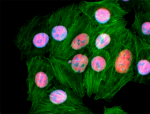
HeLa cells were fixed with 2% paraformaldehyde (PFA) for ten... -
Alexa Fluor® 647 anti-RNA Polymerase II RPB1
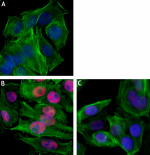
HeLa cells were fixed with 4% paraformaldehyde (PFA) for 10... -
Alexa Fluor® 488 anti-RNA Polymerase II RPB1
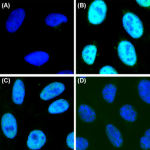
HeLa cells were fixed with 4% paraformaldehyde (PFA) for 15 ...
 Login / Register
Login / Register 










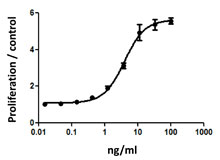
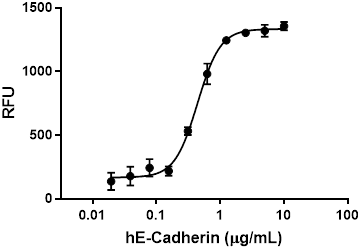

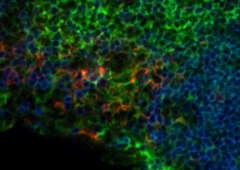
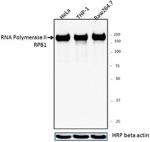



Follow Us